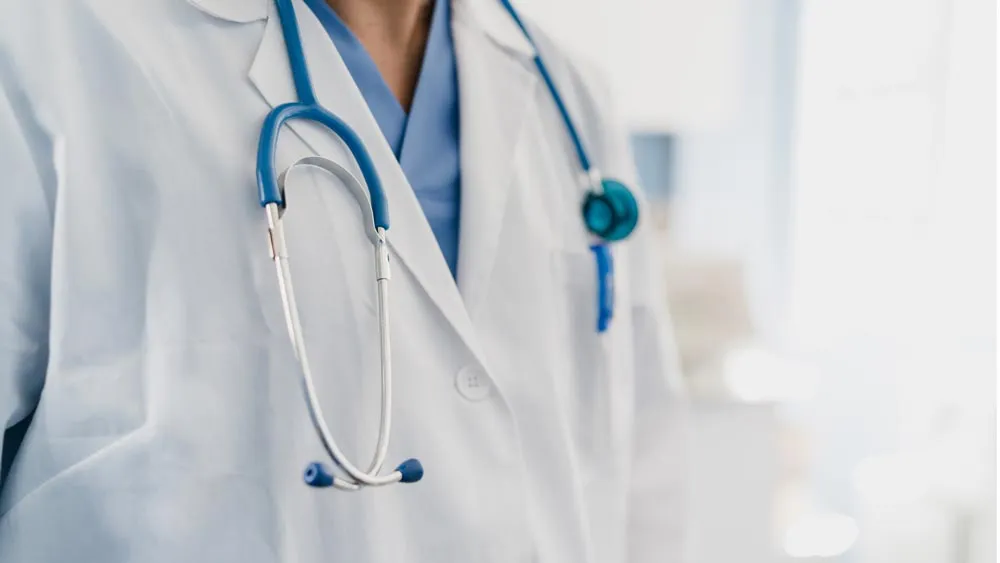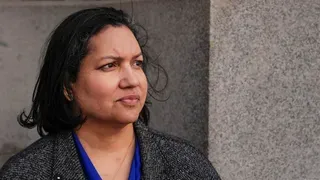July 9, 2013
Empire State Leads the Way in HIV Testing
Winnie McCroy READ TIME: 4 MIN.
New York City leads the nation as the epicenter of new HIV infections, tallying up more than 3,400 in 2011, according to studies. But the state recently took a significant step in the fight against HIV, with the Department of Health issuing a new interim HIV testing procedure for all clinical laboratories, recommending widespread use of the most advanced HIV tests available, which will arm New York with a critical tool to help limit the spread of new infections.
"When people are newly infected with HIV, it can take as many as three to four weeks for the body to make detectable antibodies, which are the body's reaction to the virus," said Dr. Gerald Schochetman, senior director of infectious diseases and diagnostic research for Abbott. "Fortunately, there are new tools available to help people identify their status sooner, called HIV combo tests (also called fourth generation tests), which can provide accurate results within two weeks of exposure to the virus because these tests can detect both antigens -- the actual HIV virus -- and antibodies. By using this modern testing technology, people may receive their diagnosis sooner, reduce risky behavior earlier, and begin recommended treatment."
New York State is responding early to pending Centers for Disease Control and Prevention's (CDC) recommendations supporting use of HIV combo tests. Scientific studies have verified the performance of this testing approach and support New York's decision to issue interim guidance ahead of the CDC's pending recommendations. It is the belief that this early detection will help curb the spread of HIV during its earliest -- and highly contagious -- stage.
"HIV combo tests, like the one developed by Abbott, can help diagnose HIV within about two weeks of exposure to the virus because they can detect both antigens (the actual HIV virus) and antibodies," said Schochetman. "This modern testing technology allows people to receive their diagnosis sooner and begin recommended treatment. This is critical since more than half of new HIV cases are transmitted when people are at this most infectious stage, when they don't know they are carrying the disease."
Public health officials have raised the heat on getting New Yorkers tested for HIV. In recognition of National HIV Testing Day on June 27, State Health Commissioner Nirav R. Shah, M.D., M.P.H., urged all New Yorkers to get tested for HIV. Approximately 156,000 New Yorkers are infected with HIV, and 18 percent of them -- nearly 30,000 -- are unaware they have the virus.
"Recent advances have greatly enhanced the treatments available to people who have HIV infections," Commissioner Shah said. "That is why it is important for people who may have the HIV virus and do not know, to get diagnosed and treated as soon as possible. New York State's HIV testing law provides a convenient and accessible way to get tested while visiting your health care provider."
Early diagnosis is critical to slowing the spread of the HIV virus. More than 30 percent of new HIV cases are considered "late diagnoses," defined as diagnosed with AIDS at the same time or within 12 months of the initial HIV diagnosis. Many of these individuals are immunologically compromised and pose a much higher transmission risk than those who are diagnosed early and receiving appropriate care and HIV medications.
Under the State's HIV testing law, which went into effect in September 2010, HIV testing must be offered to all individuals ages 13 to 64 who receive hospital or primary care services. The HIV test must be offered to inpatients, people seeking services in emergency departments, and people receiving primary care as outpatients at clinics or from physicians, physician assistants, nurse practitioners or midwives.
A recent study in the New England Journal of Medicine confirmed that early treatment of HIV slows damage to the immune system and reduces risk of transmission. A similar study in the same journal showed that individuals who began therapy within four months of infection experienced enhanced recovery of the immune system to an extent not seen in patients who started treatment in later stages.
The common thread of this body of HIV scientific research is that early diagnosis and accurate detection are critical to the ongoing fight against HIV.
"The World Health Organization's (WHO) new guidelines recommend earlier treatment for patients with HIV," echoed Schochetman. "According to WHO, doctors could save more lives worldwide if they offer AIDS drugs to people with HIV much sooner after they test positive for the virus."
Schochetman said that the guidelines were released after numerous studies found that treating HIV patients early can keep them healthier for longer, and also lowers the amount of virus in the blood, significantly cutting their risk of infecting someone else.
"Early treatment of HIV is essential, but in order to begin treatment, infected individuals must first get tested. Early diagnosis must remain a focus for physicians and patients," he added.
Research tells us that every nine and a half minutes, someone in the United States is infected with HIV. No matter the race, gender, or sexual orientation, any individual can become infected. With the help of the most advanced HIV tests, stronger HIV testing guidelines, and a renewed public health commitment to eradicating HIV, we can continue working toward an AIDS-free future, both in New York and around the world.
"New York has taken a bold step in the fight against HIV," said Schochetman. "With the help of the most advanced HIV tests, stronger HIV testing guidelines, and a renewed public health commitment to eradicating HIV, we can continue making progress toward an AIDS-free future, both in New York and around the world."
Dr. Gerald Schochetman is senior director, infectious diseases and diagnostic research for Abbott. Abbott developed the first test to detect HIV in 1985. In 2010, the FDA approved the country's first HIV combo test, also developed by Abbott.
Winnie McCroy is the Women on the EDGE Editor, HIV/Health Editor, and Assistant Entertainment Editor for EDGE Media Network, handling all women's news, HIV health stories and theater reviews throughout the U.S. She has contributed to other publications, including The Village Voice, Gay City News, Chelsea Now and The Advocate, and lives in Brooklyn, New York.





